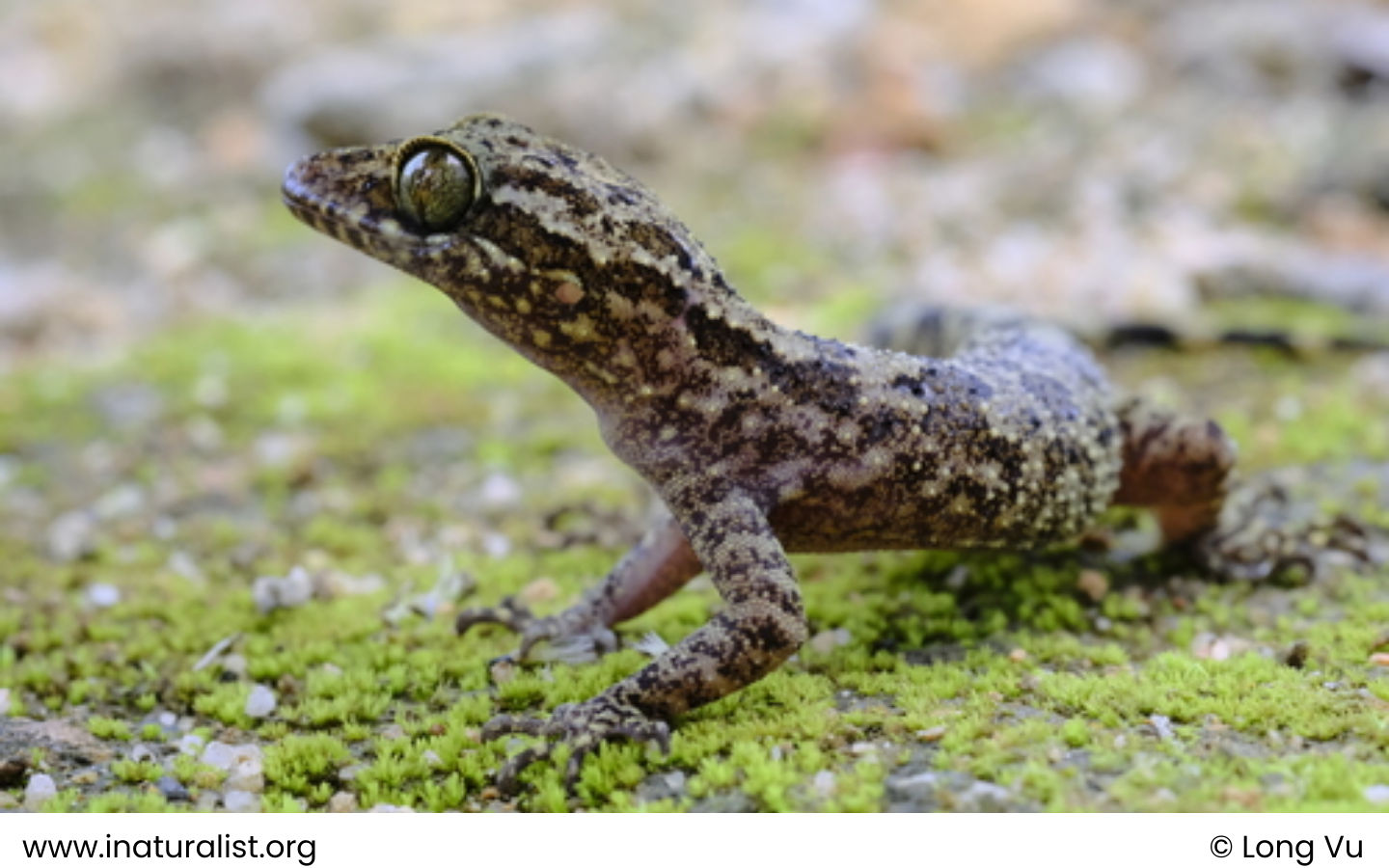
Science name: Cyrtodactylus yangbayensis – Ngo Van Tri & Onn, 2010
Taxonomic: Animalia>> Chordata>> Reptilia>> Squamata >> Gekkonidae >> yangbayensis
Species status: Endemic ; IUCN status: LC (Least Concern)
Description:
Physical Characteristics:
Cyrtodactylus yangbayensis is a medium-sized gecko, with an average snout-vent length (SVL) of 83.5 mm. Its tail is long, measuring about 1.28 times the SVL. The species has distinctive dark brown blotches on the head and a broken nuchal loop, often forming a V-shape. Its dorsal surface features five to seven irregular rows of narrow dark brown bands. Males have 6–8 precloacal pores, and the species displays 18–23 interorbital scales, with 26–32 scales between the eye and nostril. The ventral scales are arranged in 39–46 rows, while the dorsal tubercles form 20–23 irregular longitudinal rows at midbody.
Coloration and Appearance:
The gecko exhibits irregular dark brown bands across its dorsal side, with the original tail marked by alternating 9–11 bands. The species has a median row of enlarged subcaudal scales.
Distribution and habitat:
Elevation: Found at elevations between 500 and 600 meters above sea level.
Area: Cyrtodactylus yangbayensis is native to southern Vietnam, primarily known from the Hon Ba Nature Reserve and the Yang Bay Waterfall area in Khanh Hoa Province. These regions encompass monsoon evergreen forests, where the species has been observed on rocky outcrops and around streams.
Habitat: This species inhabits subtropical/tropical moist lowland forests, where it resides on rocky surfaces and trees, often in proximity to water sources such as streams.
Behaviour and ecology:
Lifestyle:
Cyrtodactylus yangbayensis is nocturnal and thrives in rocky environments near water, such as streams. The species has been found resting on rocky outcrops and in tree holes at night.
Reproduction:
The species is oviparous, with gravid females recorded carrying two eggs. Eggs are likely laid in sheltered areas such as tree holes or rock crevices.
Diet:
While specific details on diet are limited, it is likely that Cyrtodactylus yangbayensis primarily feeds on small invertebrates found in its forested habitat.
Conservation and status:
IUCN Red List Category and Criteria:
Cyrtodactylus yangbayensis is listed as Least Concern (LC) due to its stable population and occurrence in protected areas such as the Hon Ba Nature Reserve. However, part of its range, such as the Yang Bay Waterfall area, is unprotected and subject to tourism.
Threats:
Although no major threats are currently documented, habitat disturbance due to tourism and environmental changes could pose a risk, particularly in unprotected areas.
Conservation Actions:
Continued monitoring of its population and habitat is recommended, especially in areas like Yang Bay Waterfall, which lack formal protection.
Crocodile Trail – The Best Birding Trail in Cat Tien National Park
If you’re a birder or nature photographer planning a trip to Vietnam, few places offer [...]
Cong Troi Trail – Top 1 Dalat Plateau Birding Trail Experience
If you’re a birder or nature photographer planning a trip to Vietnam’s Central Highlands, the [...]
How to Identify the Greater Sand Plover, Tibetan Sand Plover and Siberian Sand Plover
Identification Differences within the Sand Plover Complex: The sand plover group, which was traditionally divided [...]
Highlights of Cat Tien National Park Reptiles and Amphibian Endemics
Spanning over 71,350 hectares of tropical forests, grasslands, and wetlands, Cat Tien National Park is [...]
Highlights of Cat Tien National Park Mammals in a World Biosphere Reserve
In addition to reptiles and birds, Cat Tien National Park is also rich in mammals, [...]
Kontum Plateau Endemic and Highlight bird
Kontum Plateau Endemic And Highlight Bird species like Chestnut-eared Laughingthrush and top birding routes while [...]